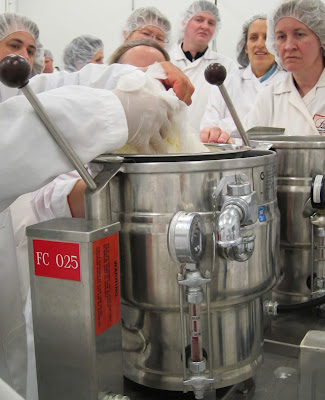The Last Invasion Tapestry, Fishguard, Wales
The Invasion
In February 1797, the British mainland was invaded for the last time. 1400 French soldiers landed just outside of Fishguard in west Wales. The plan was to proceed inland and invade Bristol, drawing the British Navy away from another assault in Ireland. They then planned to turn around and “liberate” Wales from “English tyranny" (French Revolution, 1789).
The plan failed – completely. 190 part-time British soldiers, with help from local residents, captured the soldiers and forced them to surrender.
It was an amateur battle with many amusing episodes, and they are all captured in The Last Invasion Embroidered Tapestry.
One French soldier fired at a clock because he thought someone was hiding in it.
Other soldiers became ill after undercooking the poultry they had stolen.
The French imagined there was a large British army coming to meet them when they saw local women in traditional red shawls and black hats marching round a hill.
The Tapestry
The Tapestry was commissioned by the Fishguard Arts Society to commemorate the event’s bicentennial. Designed by a professional artist, Elizabeth Cramp, and with advice from three other professional artists, the tapestry, which is 30.4 meters long and 53 centimeters deep, was stitched by 77 local people.
The stitches are mostly the same as those used by medieval embroiderers with some parts worked in outline while others are solid.
The Tapestry is an outstanding demonstration of community collaboration and art. Housed in a gallery next to Fishguard Library, on the second floor of the Town Hall, it’s worth more than one visit to take in the wealth of detail.
Information obtained from:
The Last Invasion of Britain, BBC Wales
Pembrokeshire Virtual Museum, Last Invasion Tapestry











Comments